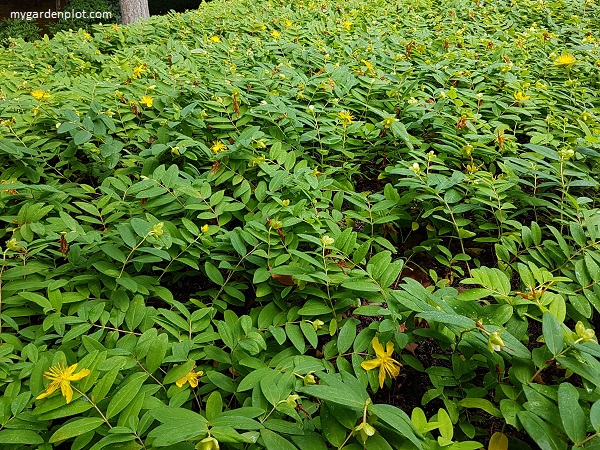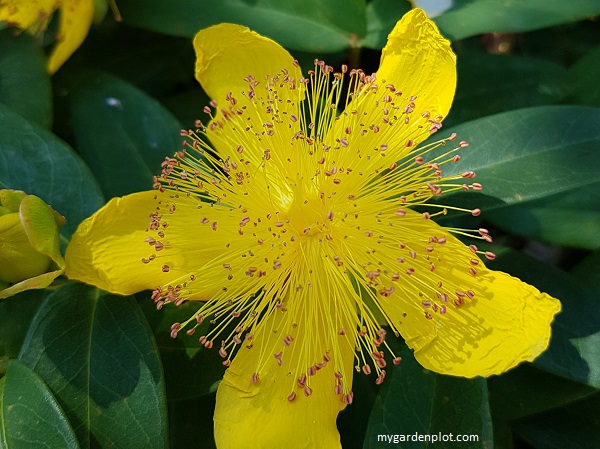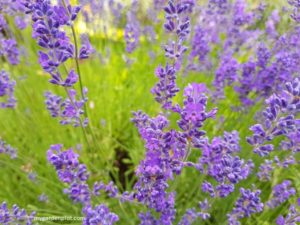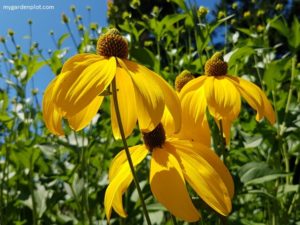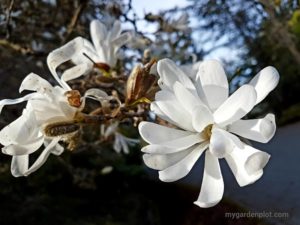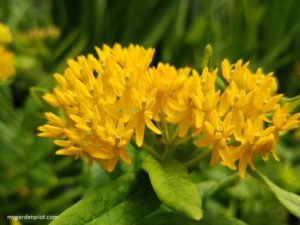Hypericum (St John’s Wort, Aaron’s Beard, Rose Of Sharon)
Hypericum, also commonly known as St John’s Wort, has showy summery yellow flowers that can bloom in masses, some from early summer through early autumn. Learn more about where to plant and how to grow, care and prune hypericum creeping groundcover and shrubby types.
St John’s Wort bloom on new wood, and the golden stamens are prominent, giving a starlight effect as though sparkling. Hypericums are fast growers and, as a groundcover (such as the H. calycinum), it can quickly establish itself. There are also tall shrubby hypericums that look appealing in a summer shrub border. It is versatile, growing almost anywhere, and most can survive even in dry, sandy soil. They are hardy, reasonably low maintenance, and evergreen in milder winter but deciduous or herbaceous perennials in regions that experience severely cold winters.
About Hypericum perforatum (Perforate St John's-wort, Common Saint John's wort)
The H. perforatum is listed as an invasive weed in several countries. It is an upright shrub form that grows about 80 cm (32 inches) tall. For farmers, it can be a severe problem for livestock if ingested. Your local garden centre will likely not carry H. perforatum for purchase, but it is worth noting. This spreading herbaceous perennial is also considered a medicinal plant. Historically it was used as a folk remedy for various nervous ailments. And during the middle ages, it was believed to have powerful magical properties to ward off evil spirits.
See below recommended hypericum (St John’s wort) species and varieties for your garden.
Hypericum (St John’s Wort) At A Glance
Type: Evergreen / Semi-evergreen / Deciduous (in colder regions)
Location: Full Sun / Part Shade
Seasonal Interest: Flowers Summer / Fall
Size: Varies
When To Prune: Late Winter / Early Spring
Plant Hardiness Zones: 4, 5, 6, 7, 8, 9
Where To Plant And How To Grow Hypericum (St John’s Wort)
The hypericum prefers to be planted in well-drained, moist, fertile soil, and preferably in full sun. They can tolerate part sunny location. And once established is drought tolerate.
An established hypericum creeping groundcover shrub can be invasive where not managed or contained. It has an extensive root system, which makes H. calycinum, in particular, ideal for rock gardens and on embankments or slopes where ground cover is needed. It can also be grown from seed and can easily self-seed.
When And How To Prune Hypericum (St John’s Wort)
Hypericums benefit from rejuvenation pruning. Depending on whether it is the creeping groundcover variety or a tall shrubby type, what needs to be done and when differs a little. Hypericums are hardy, and most will grow back from the roots even when pruned down to soil level or if there is die back due to severe cold winter.
Pruning Hypericum Groundcover or Creeping Shrub: For hypericum groundcover, hard prune by cutting back in late winter or early spring to within 5 cm (2 in) of the base. This can be done annually or every other year. Take this opportunity to clear away dead leaves and garden debris before the young shoots emerge again. After pruning in late winter, apply dormant oil spray for managing any fungus issues.
Pruning Hypericum Tall Shrubs: Pruning hypericum shrubs or tall bush in spring every two or three years helps control the size and encourage a compact form. Cut back to where young shoots are appearing. Hypericum can tolerate a hard prune if it has been neglected and become straggly. Depending on how much you prune, the shrub may not flower until the following year. Regular trimming can keep the hypericum shrub in shape. Annually check and remove for any deadwood or weak growth. Overcrowding can also contribute to fungus problems, so thinning out can allow air circulation.
Pests, Diseases And Problems That Affect Hypericum (St John’s Wort)
Hypericum is generally pest-free and deer resistant, but it can be affected by powdery mildew and rust disease. These are the two most common fungus problems for the hypericum that, while disfiguring, can be resolved and managed with easy to apply solutions, such as using dormant oil spray and annual management to ensure the powdery mildew and rust plant disease is contained.
RELATED TOPIC: About Dormant Oil Spray And How To Use This In Your Garden

RELATED TOPIC: How To Manage St John’s Wort Rust Fungal Disease
Recommended Hypericum (St John’s Wort) Species And Varieties
H. calycinum: While many of the hypericums are simply referenced as St. John’s wort, the H. calycinum is sometimes called Rose of Sharon or Aaron’s Bread too. It is a versatile ground cover suitable for erosion control. Height of up to 30 cm (12 in) and a fast-grower. For this reason, the H. calycinum has become popular in our region and often used on garden slopes by the roadside. It can be somewhat invasive, so it needs to be managed. Zones 4-9.
H. ‘Hidcote’: The Hidcote is one of the favourite shrubby types with its large golden flowers. Masses of which bloom from mid-summer to mid-autumn. It has a rounded form, good in a shrub border. Height is 1.2 metres (4 ft). Zones 5-9.
